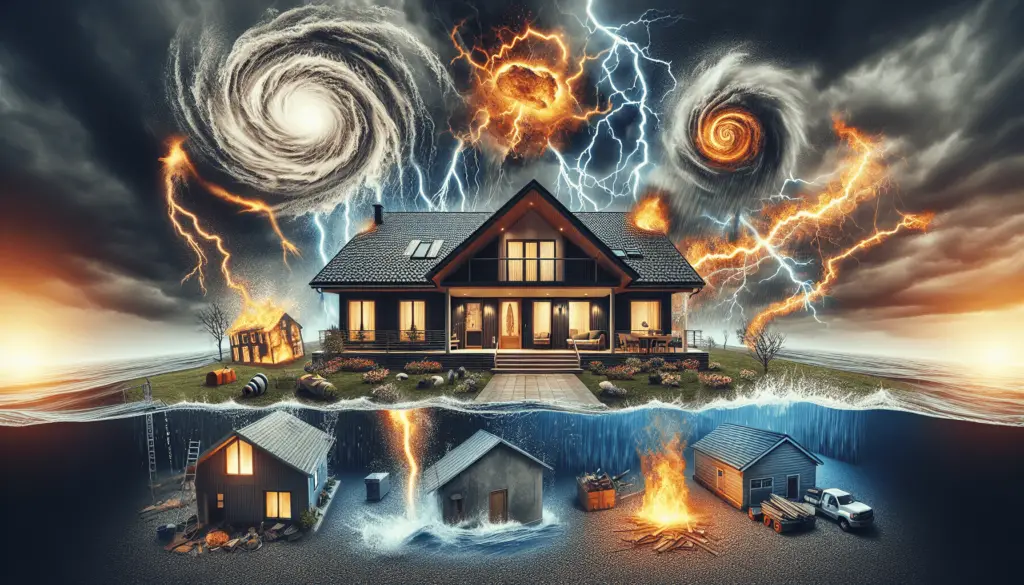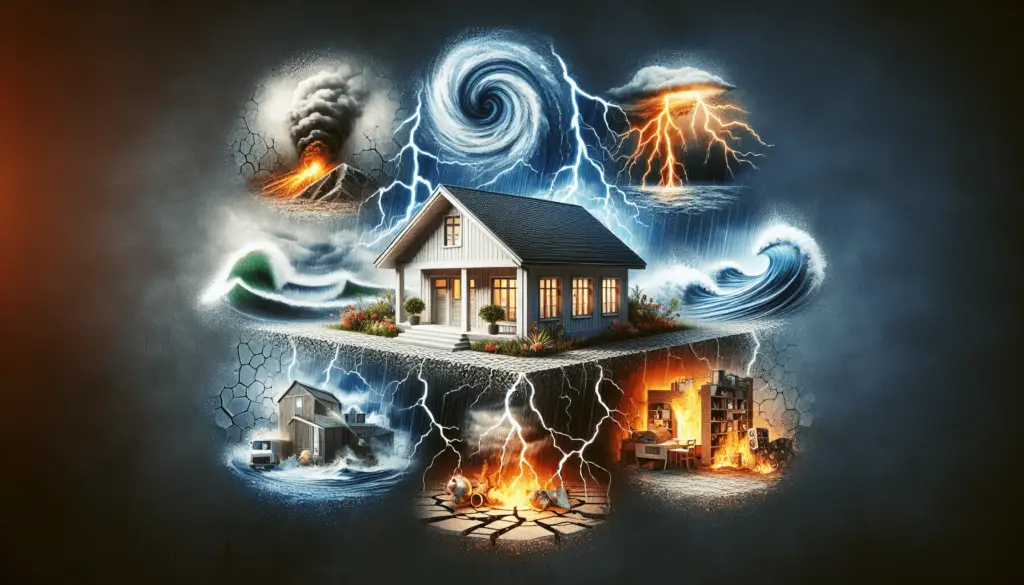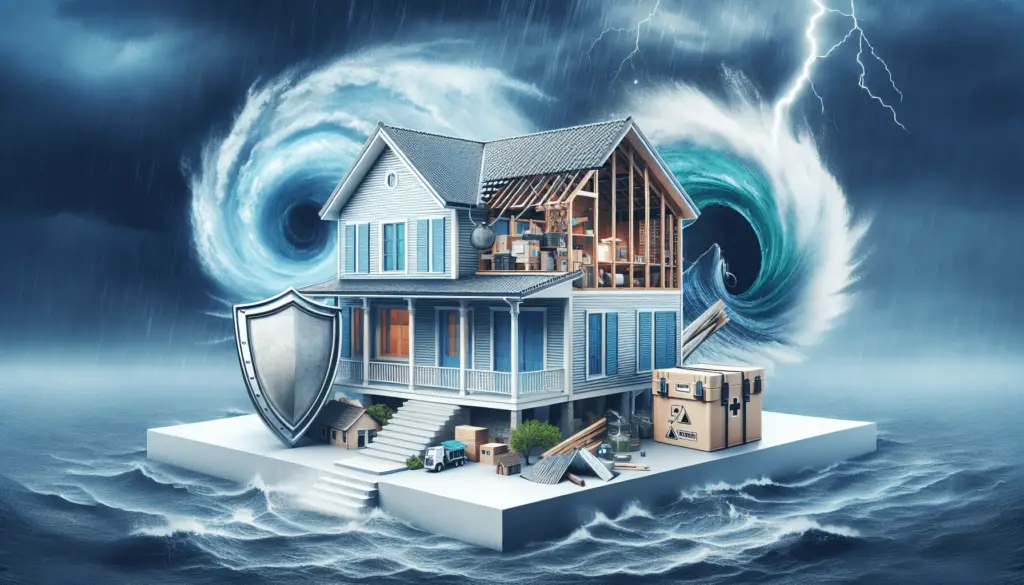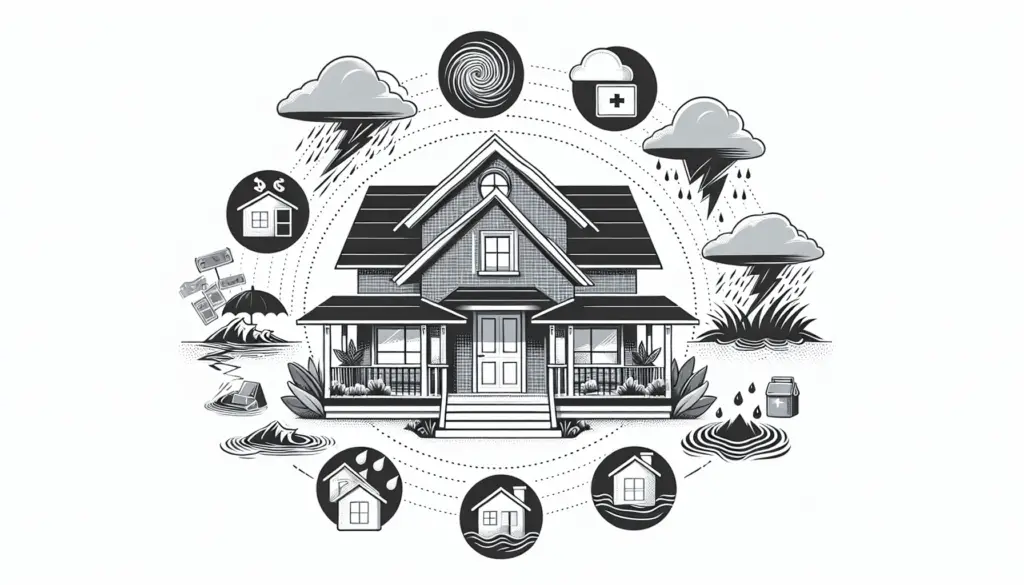Imagine living in a serene neighborhood, surrounded by lush greenery and breathtaking landscapes. Your home is your sanctuary, your safe haven. But Mother Nature can sometimes unleash her fury, and it’s essential to be prepared. From hurricanes and earthquakes to floods and wildfires, natural disasters can strike without warning, leaving devastation in their wake. In this article, you will discover practical tips and advice on how to secure your home against these uncontrollable forces of nature, keeping your loved ones and your property safe from harm. So, let’s dive in and ensure that your home is a fortress against the unexpected.

Understanding the Risks
When it comes to securing your home against natural disasters, the first step is understanding the risks that are common in your area. Every region has its own set of natural disasters that pose a potential threat to homes and properties. It is vital to identify and be aware of these risks in order to adequately prepare and prevent damage.
Start by researching the natural disasters that are known to occur in your area. Is your region prone to hurricanes, earthquakes, floods, wildfires, or tornadoes? By understanding the specific types of disasters you may face, you can focus your efforts on preparing for those particular events.
Once you have identified the natural disasters that are common in your area, it is important to research the specific risks associated with each type of disaster. For example, if you live in an area prone to floods, you need to understand the likelihood of water damage and the potential safety hazards that come with it. Likewise, if earthquakes are a concern, understanding structural vulnerabilities and potential dangers is crucial.
In addition to understanding the risks associated with each type of natural disaster, familiarize yourself with warning signs and emergency alerts. Knowing how to recognize the signs of an approaching disaster and understanding the official alerts and warnings will allow you to take swift action and protect yourself and your home.
Preventing Water Damage
Water damage can wreak havoc on a home, causing structural damage, mold growth, and the loss of valuable possessions. To prevent water damage, there are several important steps you can take.
One of the first steps is to ensure proper drainage around your home. Make sure that water is directed away from your foundation by properly sloping the land and installing a system that collects and redirects water. This will help prevent water from seeping into your basement or crawl space.
In flood-prone areas, installing flood barriers or sandbags can provide an added layer of protection. These barriers can help divert water and prevent it from entering your home.
Elevating important appliances and electrical systems off the ground is another effective way to prevent water damage. By raising these items, you reduce the risk of damage from flooding or leaks.
Regularly checking for and repairing any leaks in your plumbing system is also essential. A small leak can quickly escalate into a major water damage incident if left unaddressed.
Lastly, consider installing a sump pump in your basement. A sump pump is designed to remove water that accumulates in the basement due to flooding or high water tables. It can help prevent water damage and keep your basement dry.
Securing Your Home Against Earthquakes
Earthquakes can cause severe damage to homes, leading to collapse and compromise of the structure. To secure your home against earthquakes, there are proactive measures you can take.
Anchor heavy furniture and appliances to the walls to prevent them from tipping over during an earthquake. This can be done using brackets, straps, or stud screws. By securing these items, you can minimize the risk of injury and damage caused by falling objects.
Secure cabinets, bookshelves, and other storage units to prevent them from toppling over during an earthquake. Use brackets or latches to secure them to the walls or floors.
Install latches on cabinets and drawers to prevent them from opening and spilling their contents during an earthquake. This can help prevent injuries and maintain order in your home.
Water heaters and gas appliances can be secured with earthquake straps to prevent them from tipping over and causing leaks or fires.
Consider reinforcing your home’s foundation and structure. Consult with a professional engineer to assess the stability of your home and determine if additional measures, such as bracing or strengthening, are necessary.
Protecting Against High Winds and Hurricanes
High winds and hurricanes can cause significant damage to homes, including roof damage and destruction of outdoor items. To protect your home against these powerful storms, there are various steps you can take.
Regularly inspect and repair your roof, including shingles, tiles, and gutters. Loose or damaged materials can become projectiles during high winds, posing a danger to both your home and surrounding properties.
Consider installing hurricane shutters or impact-resistant windows to protect your home’s windows from flying debris. These specially designed shutters or windows can help prevent damage and maintain the integrity of your home’s structure.
Secure outdoor items and furniture by either bringing them inside or anchoring them down. Loose items can become dangerous projectiles during high winds, causing damage to your home and posing a risk to people in the vicinity.
Regularly trim trees and remove dead branches. Strong winds can cause weakened branches or entire trees to fall, potentially damaging your home. Trimming trees will help prevent this and reduce the risk of injury or property damage.

Preparing for Wildfires
Wildfires can spread quickly and devastate entire communities. To protect your home against wildfires, it is important to take proactive measures.
Create a defensible space around your home by clearing vegetation and debris. Maintain a buffer zone between your home and flammable materials, such as dry grass, leaves, or shrubs. This will reduce the risk of fire reaching your property.
Use fire-resistant materials for your roof and siding. Certain materials, such as metal or concrete, are less likely to catch fire and can help protect your home.
Install spark arrestors on chimneys and stovepipes. These devices prevent embers and sparks from escaping and potentially igniting nearby combustible materials.
Keep your gutters and roof free from debris and leaves. These materials can easily catch fire and spread flames to your home. Regularly cleaning your gutters and roof will help reduce this risk.
Ensuring Safety During Tornadoes
Tornadoes are powerful and destructive storms that can cause significant damage to homes and properties. To ensure safety during tornadoes, it is important to take proactive measures.
Identify a safe room in your home, such as a basement or interior room with no windows. This room should be reinforced and able to withstand high winds and flying debris.
Reinforce your garage doors, as they are often vulnerable to high winds. Install a bracing system or consider replacing them with stronger, impact-resistant doors.
Install storm shutters or impact-resistant windows to protect your home’s windows from flying debris. These specially designed shutters or windows can help prevent damage and maintain the integrity of your home’s structure.
Have a plan for where to seek shelter if you are away from home during a tornado. Identify nearby public shelters or safe locations where you can take cover until the tornado passes.

Preparing for Volcanic Eruptions
Living in proximity to a volcano presents unique challenges and risks. To prepare and protect your home against volcanic eruptions, it is important to stay informed and take appropriate measures.
Monitor official sources for updates and evacuation notices. Volcanic eruptions can be unpredictable, and staying informed about the status of the volcano is crucial for your safety.
Prepare an emergency kit with essential supplies. This kit should include food, water, medication, a first aid kit, flashlights, and other necessary items in case of an evacuation or prolonged disruption.
Create an evacuation plan and familiarize yourself with evacuation routes. Know the designated evacuation centers and the safest routes to reach them. Practice the plan with your family to ensure everyone knows what to do in case of an eruption.
Install air purifiers and seal windows and doors to minimize the entry of volcanic ash. Volcanic ash can be harmful if inhaled, and sealing your home can help protect you and your family from its effects.
Protecting Your Home from Landslides
If you live in an area prone to landslides, it is important to take measures to protect your home and ensure the stability of your property.
Consult with a geotechnical engineer to assess the stability of your property. They can provide valuable insights into the risks and recommend measures to mitigate them.
Create sloping channels or retaining walls to redirect water flow. Water can weaken slopes and increase the risk of landslides. By redirecting water away from slopes, you can minimize the risk.
Plant vegetation with extensive root systems to stabilize slopes. The dense root systems of certain plants can help prevent soil erosion and stabilize slopes.
Divert water away from slopes by ensuring you have proper drainage systems in place. Installing gutters, French drains, and other drainage solutions can help prevent water buildup and minimize the risk of landslides.

Preparing for Winter Storms
Winter storms can bring heavy snowfall, ice accumulation, and freezing temperatures. To prepare your home for winter storms, there are several important steps to take.
Insulate your home properly to prevent heat loss. This will not only help keep your home warm and comfortable but also reduce your energy consumption and utility bills.
Have a backup power source, such as a generator or alternative heating system. Winter storms can often cause power outages, so having a backup power source can help ensure your comfort and safety.
Stock up on essential supplies, including food, water, and medication. In the event of a severe winter storm, you may be unable to leave your home for an extended period. Having an ample supply of essential items will help you weather the storm.
Clear snow and ice from your roof to prevent overloading and water damage. Excessive snow or ice buildup can add unnecessary weight to your roof, increasing the risk of collapse. Clearing it periodically will help prevent damage and keep your home safe.
Creating an Emergency Plan
In addition to taking specific measures to secure your home against natural disasters, it is important to have a comprehensive emergency plan in place.
Identify a designated meeting place for your family in case of evacuation. This location should be easily accessible and known to all family members. It will serve as a gathering point during emergencies.
Establish communication methods for emergencies. This can include creating phone trees, where each family member has a designated person to contact and pass on information. Walkie-talkies can also be useful for communication during disasters.
Prepare an emergency kit with essential supplies for each family member. This kit should include food, water, medication, a first aid kit, flashlights, and any other necessary items for survival during emergencies.
Regularly practice emergency drills to ensure everyone knows what to do in case of a disaster. This will help familiarize your family with the emergency plan and ensure a timely and coordinated response.
By understanding the risks, taking preventative measures, and creating an emergency plan, you can significantly increase the safety and preparedness of your home against natural disasters. Remember, being proactive and prepared is the key to mitigating potential damage and ensuring the well-being of yourself and your loved ones. Stay informed, stay prepared, and stay safe!
